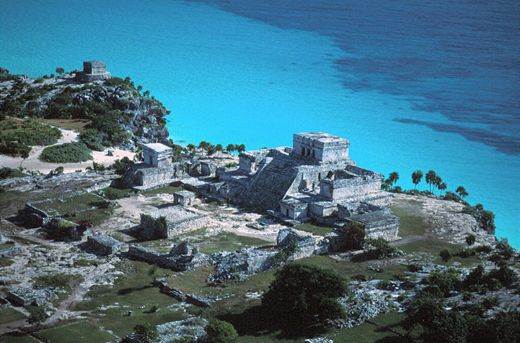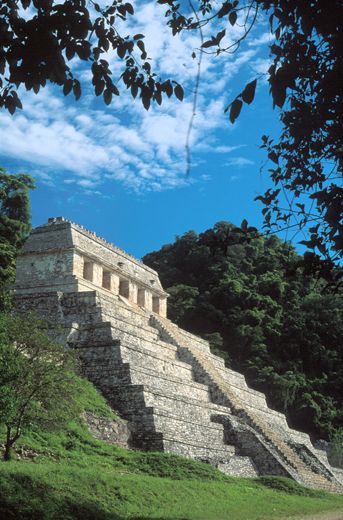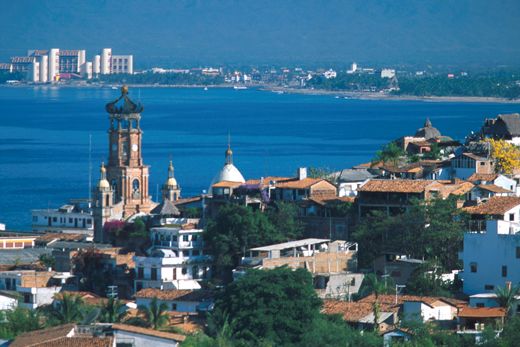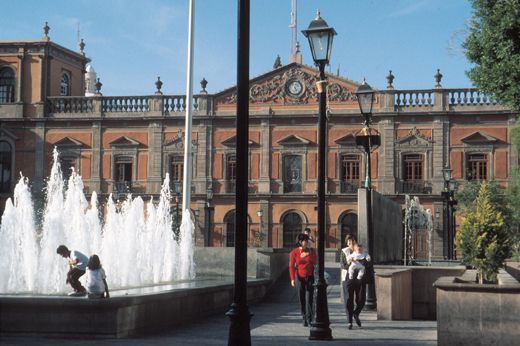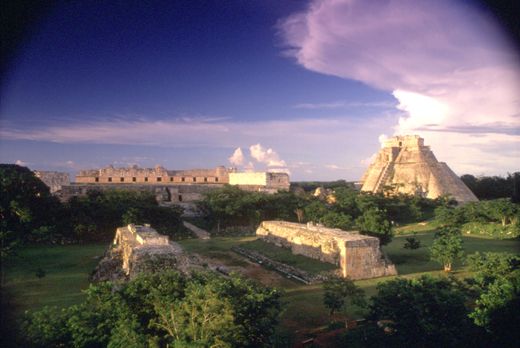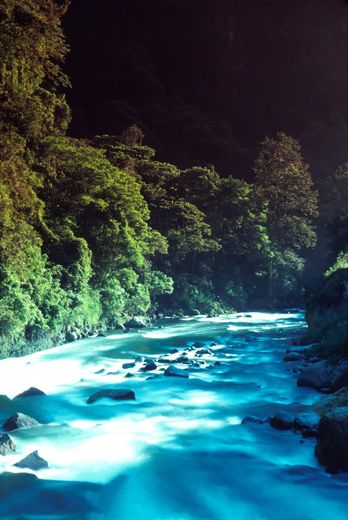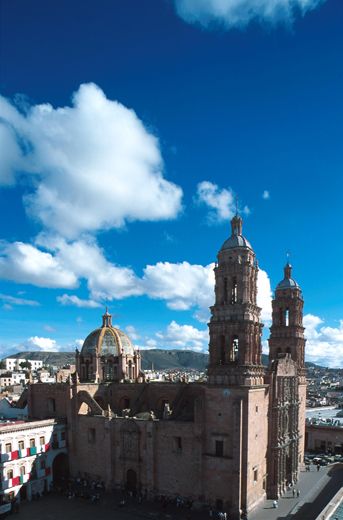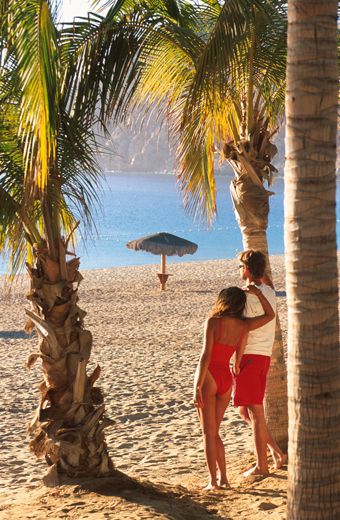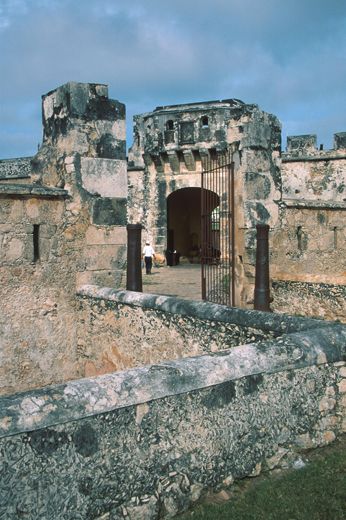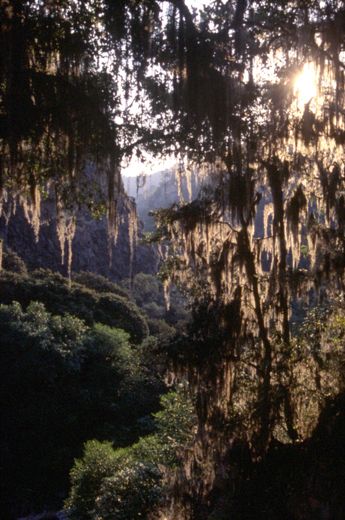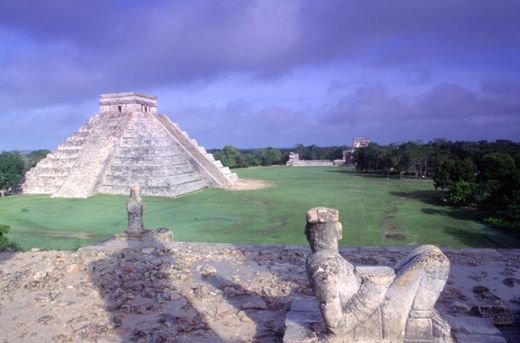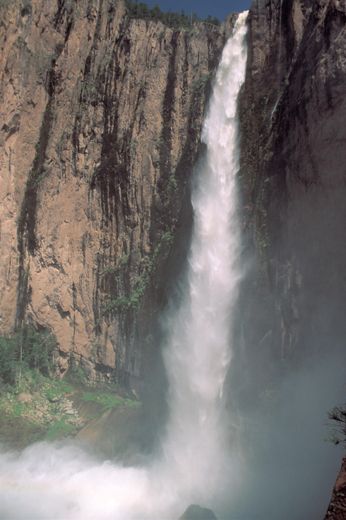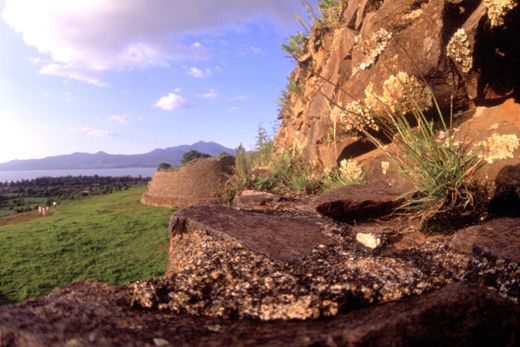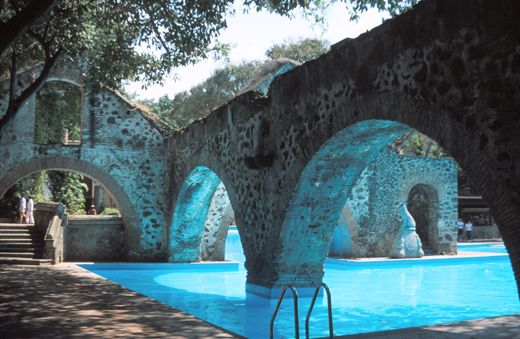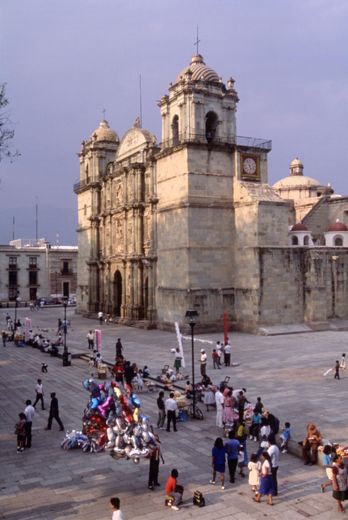Mexico
/https://tf-cmsv2-smithsonianmag-media.s3.amazonaws.com/filer/aa/f5/aaf59851-d599-4ac5-b270-a228b9171ebb/mex5.jpg)
Mexico has many faces, each offering visitors a unique insight into this fascinating country and its people. Start with blue seas teeming with fish and coral, crystal-white beaches, lofty mountains and volcanoes, jungles full of exotic wildlife, collectible indigenous arts and the breathtaking remains of ancient cultures. Add cosmopolitan cities and charming colonial towns, championship golf courses, world class hotels and resorts and flavorful cuisines. Whatever your interests, travel in Mexico will go beyond your expectations.
Mexico is among the richest Latin American countries in traditions, formed by the fusion of the Spanish culture—present in everything from architecture to language, from Talavera tile-making to the Catholic religion—layered on to the already complex, sophisticated and luxurious map of indigenous Mesoamerica. The world “discovered” in the early 16th century by Hernan Cortes was in many ways even more educated and complex than that of its conquerors.
Some pre-Hispanic societies were sophisticated, erecting great cities and building elaborated crypts for generations of kings. Others maintained a less structured, nomadic lifestyle. Thousands of miles of seacoast, rich alluvial plains and extensive mountain ranges, covered in forests and rich in mineral wealth, provided a bounty of food and natural resources. Mesoamerican scholars and priests had excelled at advanced mathematics, astronomy and architecture since the dawn of the Christian era. The Mayans and Zapotecs employed several highly accurate calendars for rituals and recordkeeping, and were among the first people anywhere in the world to develop a place-value system of counting.
Besides the archeological sites representing these mysterious ancient cultures, there are colonial churches, haciendas, town squares and graceful avenues to remind you of the Spanish heritage and a synergy of two cultures. One of the jewels of this marriage between the Old and New Worlds is Mexico City. The city rose from the ruins of the Aztec Empire in the early 1500’s. Over the next 300 years it became an impressive city of plazas, parks and monumental structures. Its landscape is full of beautiful examples of the baroque, neoclassical and colonial architecture, but the city also boasts an amazing array of contemporary buildings.
Culture and nature are part of almost every visit to Mexico; whether for business or pleasure. Its long coasts offer many different choices for a time of sun and relaxation, each one with its own local culture and character. With the sixth highest level of biodiversity in the world, Mexico offers plenty of opportunities for adventure in stunning natural environments. Thanks to its year-round mild climate, almost all activities can be enjoyed every season.
Mexico offers a variety of cultural sites in diverse settings and terrains. Modern architecture reflects the vitality of the Mexican spirit, and visual arts, music and dance enliven museums, city squares, and performance halls. Living traditions, carried on by indigenous peoples throughout the country bind together past and present with a unique Mexican flavor. You can experience these cultures through handcrafts, dress, cuisine and distinctive regional festivals.
A Mosaic of Marvelous Regions
Mexico’s vast territory is part of the secret for its great diversity of climates, landscapes and cultures. More than a monolithic structure, Mexico is the sum of different wills and traditions, all of them united in their pride for their ancestral roots. Each region of the country has its own identity and charm.
Mexico’s location has long been misinterpreted by many. Contrary to common knowledge, Mexico is not part of Central America but comprises the southern region of North America. The country has 6,200 miles of coast and a 2,000 miles border with the United States. It is bounded to the north by the states of California, Arizona, New Mexico and Texas, and to the south by Belize and Guatemala. There are two main mountain ranges: the “Sierra Madre Occidental” to the west and the “Sierra Madre Oriental”, to the east. It is also surrounded by the Gulf of Mexico, the Pacific Ocean, the Gulf of California and the Caribbean Sea.
The Yucatan Peninsula
Dense with forests, ruins, and beaches, the Yucatan Peninsula is clearly different from the rest of Mexico in geographical and cultural terms. It was the heartland of Mexico's Mayans, as the ruins at Tulum, Uxmal, and Chichen-Itza amply testify. Almost half of Mexico's major archeological sites reside there. The Yucatan Peninsula rests on a massive limestone plate, and for centuries locals have drawn their water from amazingly clear limestone wells called cenotes. The resort sprawl of Cancun is by far the most visited spot. But besides Cancun a visit to this region must include, at least, the diver's paradise of Cozumel, the colonial cities of Campeche and Merida, and its amazing natural reserves.
The Pacific Coast & Guadalajara
The Pacific Coast, long and well-developed, is Mexico's national and international playground with famous resorts like Puerto Vallarta, Ixtapa, Acapulco, Huatulco and Manzanillo. The beaches, snorkeling, fishing, and weather are excellent. A few hours inland from Puerto Vallarta is Guadalajara, Mexico's second largest city with a population of over 3 million people. Despite its size, Guadalajara retains a charming intimacy, and its weather is reputed to be the best in the hemisphere with a year- round average of about 70F. The city has always been independent in spirit. It is the birthplace of mariachi music and a modern religion center, which is evident by many Cathedrals.
Mexico City & The Central Highlands
As if not wishing to leave any doubt as to where the nation's capital is, the Distrito Federal has become the world's largest city. Mexicans affectionately refer to it simply as DF, "De Efe," and one in six Mexicans live there. It was built literally on top of the old Aztec capital, Tenochtitlan. It is one the most important cultural centers in the hemisphere, awash in cathedrals, museums, monuments, markets, art galleries, parks, squares, and more. But there’s no reason to be intimidated by its size: many of the attractions reside in the Old City. Surrounding Mexico City are the Central Highlands, six states beaming with colonial splendor: Guanajuato, Queretaro, Aguascalientes, Zacatecas, San Luis Potosi, and Michoacan. Many of the large highland cities, such as Guanajuato, are beautifully set into the mountains like elaborate colonial inlays.
The North
Mexico's North, a large area of deserts, farmlands, and mountains, is the country's most sparsely populated region. The vastness of the region has always given its people an independent, frontiersman spirit. During the Revolution, the North produced many of the rebel leaders: Villa, Obregon, Madero, and Carranza were all “norteños”. Along the 2,000-mile US-Mexican border, the towns are an interesting mix of both cultures. Chief among these is Monterrey, Mexico's third largest city and one of its most important manufacturing centers.
The South
The southern states of Oaxaca, Tabasco, and Chiapas are indigenous country. In Oaxaca, most indigenous are either Zapotec or Mixtec, and their culture is visible in an astonishing array of color and art unlike anywhere else in Mexico. Some of Mexico's most important archeological sites are also here, including the mountaintop city of Monte Alban, and Mitla. Chiapas, further south, hosts what many consider the most important Mayan site, the city of Palenque.
The Gulf Coast
Mexico's Gulf Coast is dominated by the state of Veracruz, where Hernan Cortes landed in 1519 and began his conquest of New Spain. Today, the state is the base for the largest, nationally owned oil industry. Though Veracruz is not really a beach-blessed tourism center, the state has some prestigious claims to fame. In the northern part of the state is El Tajin, the incredibly intact remains of this city built by the Huastec and the Totonac Indians. In Veracruz, you can also climb Mexico's highest peak, the Pico de Orizaba, with its majestic height of 18,551 feet.
